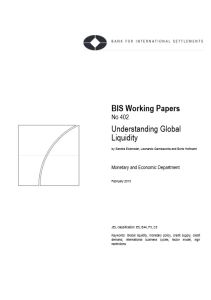Join getAbstract to access the summary!

Join getAbstract to access the summary!
Sandra Eickmeier, Leonardo Gambacorta and Boris Hofmann
Understanding Global Liquidity
BIS Working Papers No 402
BIS, 2013
What's inside?
What exactly is “global liquidity”? And how does it function?
Recommendation
Econometric analysis forms the main body of this crisp, efficient academic paper about “global liquidity.” Economists Sandra Eickmeier, Leonardo Gambacorta and Boris Hofmann contend that three main factors contribute to global liquidity: “global monetary policy, global credit supply” and “global credit demand.” They identify patterns in the interrelationships among them over time, particularly in the run-up to and the aftermath of the 2008 crisis. Though not radical, their conclusions show how data-managing econometric techniques can support economic conclusions. getAbstract recommends their clear insights as aids in exploring the largely uncharted subject of global liquidity.
Summary
About the Authors
Sandra Eickmeier is an economist at the Deutsche Bundesbank. Leonardo Gambacorta and Boris Hofmann are economists at the Bank for International Settlements.

















Comment on this summary